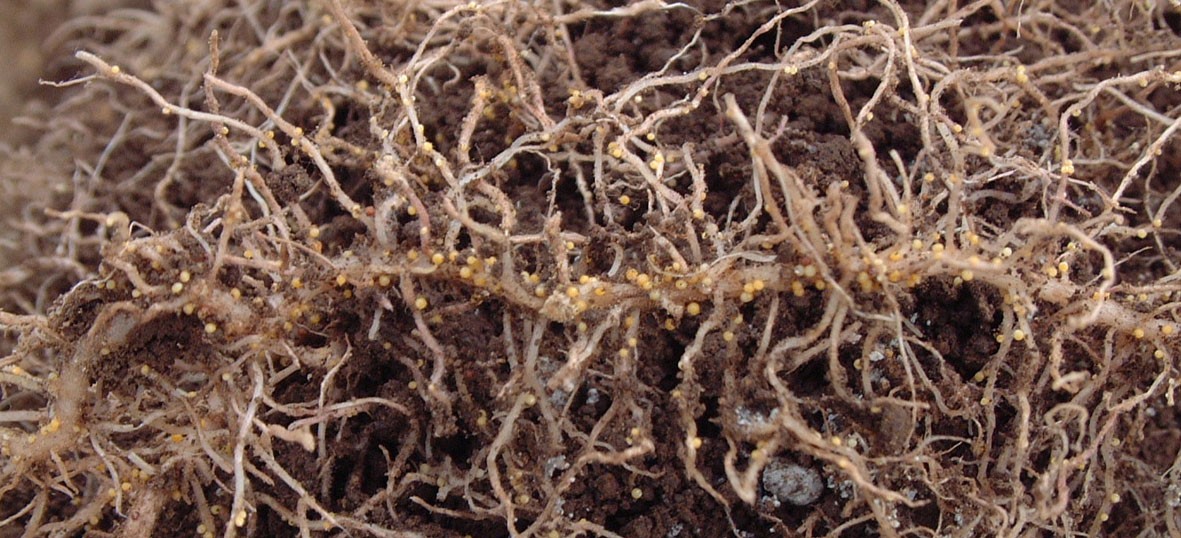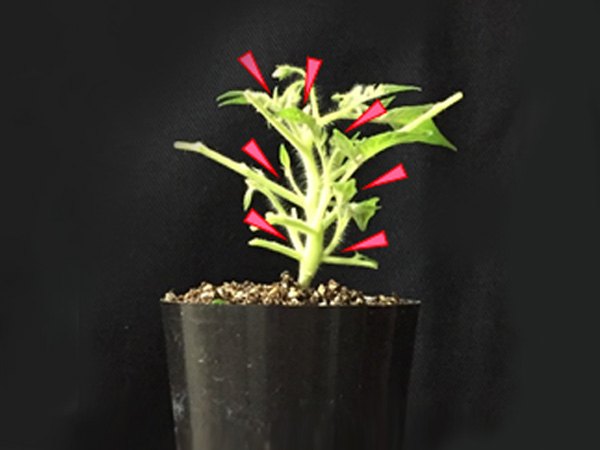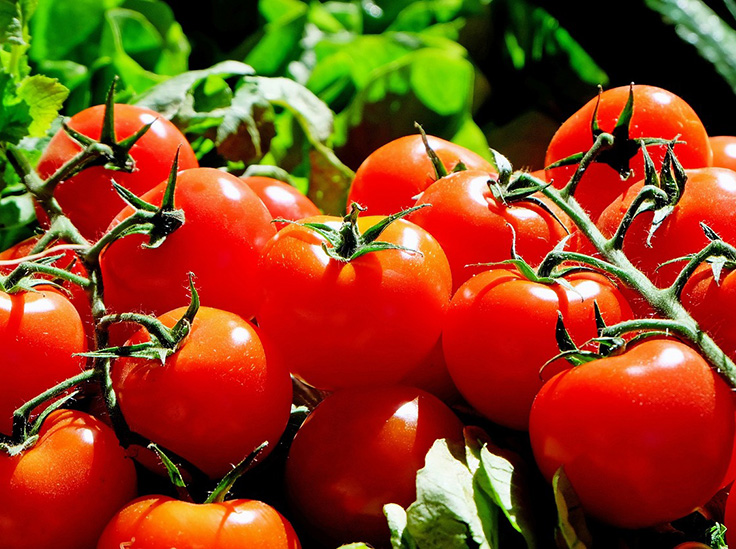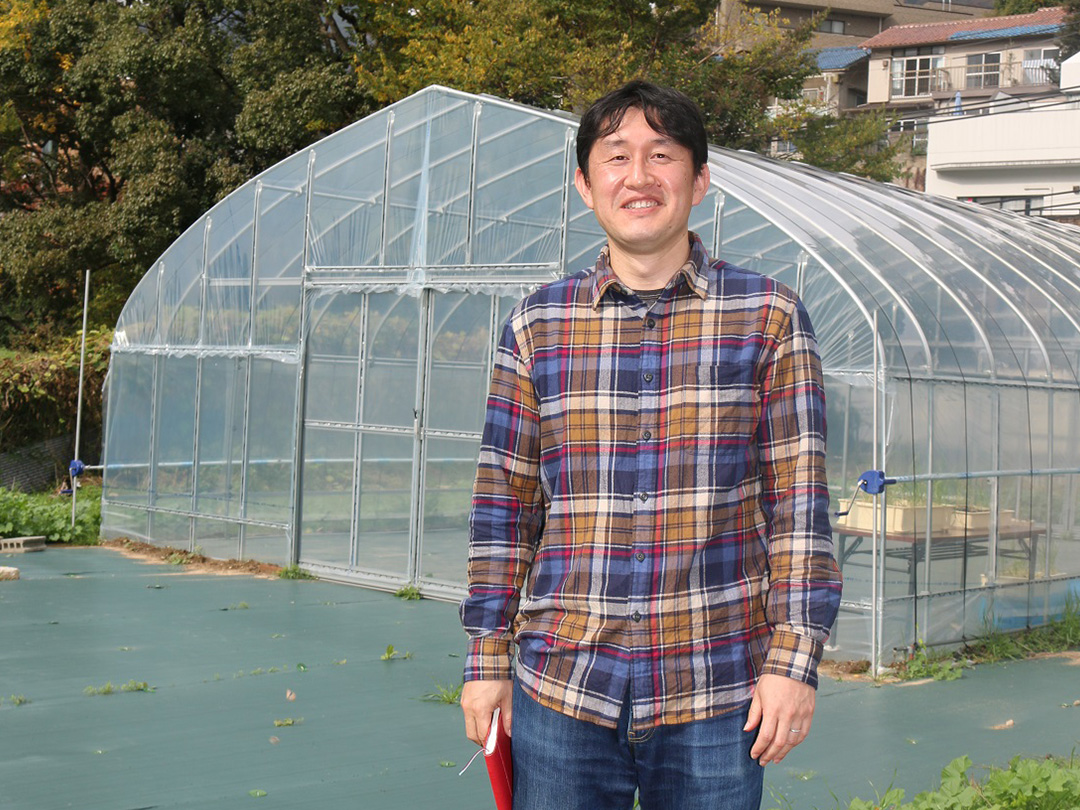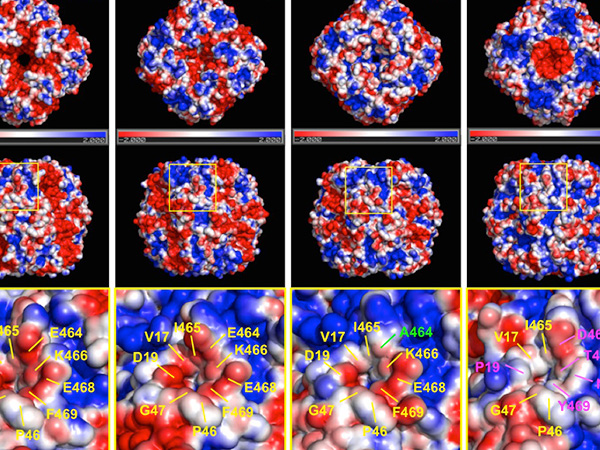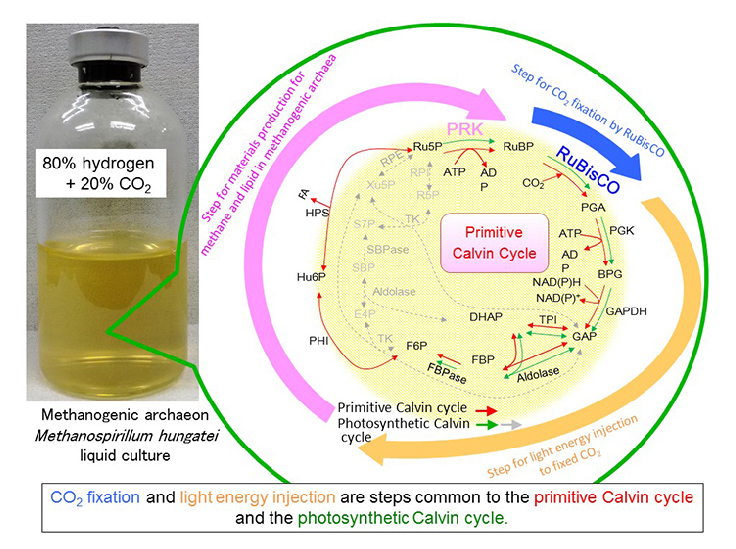Commonly known as “witchweed”, the parasitic plant Striga hermonthica devastates crops in sub-Saharan Africa. Scientists have discovered a unique protein in Striga that helps sustain its high transpiration. Striga uses transpiration to effectively steal water and nutrients from its hosts, so this protein could provide a new target for controlling Striga. The findings were published on February 25 in Nature Plants.
Striga hermonthica is a parasitic weed mainly found in the African continent south of the Sahara desert. It leeches off the roots of major cereal crops such as sorghum, millet, sweetcorn and rice, absorbing water and nutrients from its hosts. Damage to agriculture in Africa caused by Striga is estimated at approximately nine billion US dollars a year (Figure 1).
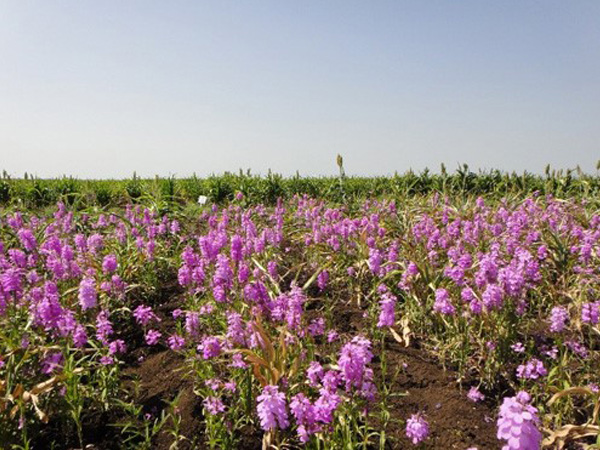
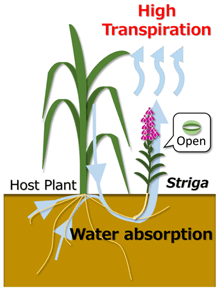
In transpiration, water is carried through plants and evaporates from their leaves via stomata (breathing pores). Under drought conditions, plants generally limit transpiration to regulate water loss, but Striga maintains its high transpiration levels. This means that in arid regions, Striga can steal water and nutrients more effectively from its hosts (Figure 2). However, the mechanism whereby Striga keeps its stomata open has not been elucidated.
When plants are subjected to drought stress, they synthesize a plant hormone called abscisic acid (ABA). This small molecule elicits stomata closure to suppress transpiration. Striga leaves contain a large amount of ABA, and exogenous ABA treatment did not reduce transpiration. The team concluded that the cause of Striga’s high transpiration levels is a defectiveness in ABA sensitivity.
ABA in plants rapidly increases in response to drought stress and binds a receptor known as PYL. The ABA-bound PYL receptor complex binds and inhibits group-A type-2 C protein phosphatases (PP2Cs), which are negative regulators for ABA signaling. Consequently, inhibition of PP2Cs enable guard cells to close stomata (Figure 3). The research group isolated relevant genes in Striga and analyzed their functions. They identified the ShPP2C1 gene, and its protein blocked the signaling of ABA constitutively, because ShPP2C1 is not controlled by PYL receptors (Figure 3). ShPP2C1 has distinct amino acid mutations not seen in other plants. When the team edited five amino acid sequences in model plant Arabidopsis to resemble ShPP2C1 (represented as AtABI15 mutation), the Arabidopsis’ response to ABA decreased, and its high transpiration levels remained even under drought conditions (Figure 4).
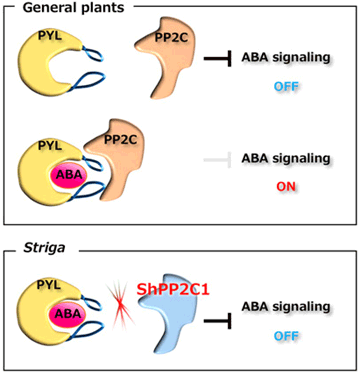
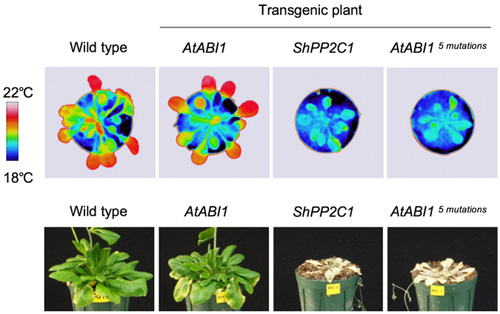
Upper part: Thermo-imaging photos. As transpiration levels rise, the temperature lowers and plants appear blue. ShPP2C1 and AtABI1 5 mutation exhibit higher rates of transpiration.
Lower part: ShPP2C1 and AtABI1 5 mutation become weak against drought stress. They eventually dry up and die.
Professor Yukihiro Sugimoto (Kobe University Graduate School of Agricultural Science) and Assistant Professor Masanori Okamoto (Utsunomiya University Center for Bioscience Research and Education) organized this joint research, which was supported by the Science and Technology Research Partnership for Sustainable Development Program (SATREPS).
Professor Sugimoto and Assistant Professor Okamoto comment: “Our results show that amino acid mutations changed the properties of PP2C genes in Striga, lowering its sensitivity to ABA and allowing it to maintain high transpiration rates even under drought conditions. Terrestrial plants acquired ABA signaling in order to survive in an environment with changing water conditions. Striga probably lost these functions and acquired its own nutrient acquisition methods in the process of adapting to its parasitic lifestyle.”
The findings suggest that ShPP2C1 plays an important role in Striga’s acquisition of nutrients and water, and by targeting it new Striga control methods may be possible. “If we can inhibit the functions of ShPP2C1, this will recover the ABA response of Striga, and limit its ability to steal water and nutrients,” says Professor Sugimoto. “Going forward, through more detailed analysis of the ShPP2C1 protein structure, we hope to develop drugs that can limit the functions of ShPP2C1.”
Journal information
- Title
- “Aberrant protein phosphatase 2C leads to abscisic acid insensitivity and high transpiration in parasitic Striga”
- DOI
- 10.1038/s41477-019-0362-7
- Authors
- Hijiri Fujioka, Hiroaki Samejima, Hideyuki Suzuki, Masaharu Mizutani, Masanori Okamoto, Yukihiro Sugimoto
- Journal
- Nature Plants







